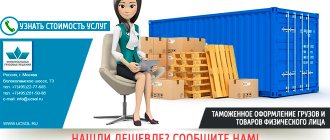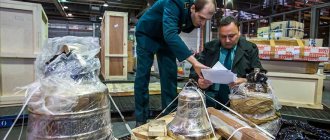Normative base
EAEU
The answer to the question of who can be an applicant is contained in paragraph 5.
Appendix No. 9 to the Treaty on the EAEU: When assessing conformity, the applicant may be a legal entity registered on the territory of a member state in accordance with its legislation or an individual as an individual entrepreneur who is a manufacturer or seller or a person authorized by the manufacturer.
The range of applicants is established in accordance with the technical regulations of the Union.
In the same Appendix No. 9, but already in paragraph 3. It also contains a definition of “a person authorized by the manufacturer”:
“A person authorized by the manufacturer” is a legal entity or individual registered in the manner established by the legislation of a Member State on its territory as an individual entrepreneur, who, on the basis of an agreement with a manufacturer, including a foreign manufacturer, acts on behalf of this manufacturer when assessing conformity and release of products into circulation on the territory of the Union, and also bear responsibility for non-compliance of products with the requirements of technical regulations of the Union.
The same formulations (sometimes in a slightly different form) are found and, most importantly, specified in other regulatory documents and technical regulations. For example, in the Decision of the EEC Board No. 293 “On uniform forms of certificates and declarations...” the wording is repeated almost word for word, and in the Decision of the EEC Council No. 44 “On standard conformity assessment schemes” it is clarified who exactly (manufacturer or seller) can be an applicant under a certain conformity assessment scheme.
Russia
National legislation (namely 184-FZ “On Technical Regulation”) establishes mandatory requirements for the applicant only when declaring conformity (Article 24):
When declaring conformity, the applicant may be a legal entity or an individual registered in accordance with the legislation of the Russian Federation on its territory as an individual entrepreneur, either a manufacturer or seller, or performing the functions of a foreign manufacturer on the basis of an agreement with him in terms of ensuring compliance of supplied products with technical requirements regulations and in terms of liability for non-compliance of supplied products with the requirements of technical regulations (a person performing the functions of a foreign manufacturer)
During certification, there are no special requirements for the applicant (in terms of registration), and therefore a foreign manufacturer can also be an applicant for certification for compliance with the standards and technical regulations of the Russian Federation. Unless otherwise established by these standards and technical regulations, of course.
If we talk about other certification systems, then, for example, the applicant in some communication certification schemes can be a foreign company, and in the case of certification of technical means of transport security - only legal entities or individual entrepreneurs registered in Russia.
Thus, there are, in fact, only 2 requirements for the applicant in both the EAEU and the Russian Federation:
- It must be registered in the territory of the technical regulation system
(EAEU for relevant technical regulations or Russian Federation for national standards). With the rare exception mentioned above: national standard certification.
- When drawing up a document for serial production, he must be the manufacturer
or a person authorized by the manufacturer.
The requirements are quite logical. Registration in the territory of validity of certain permits is necessary so that the applicant can be found (and, if necessary, prosecuted). And only the one who produces it can guarantee the conformity of products during serial production.
Person authorized by the manufacturer
In the event that a product requires a document for serial production, and it is produced by a foreign company, then only a person authorized by the manufacturer can act as an applicant.
At the beginning, we provided the definition of an authorized person; let us dwell on three key points of this definition:
“A person registered in accordance with the procedure established by the legislation of a Member State on its territory”
As mentioned above, this was done to ensure that the applicant fell under the jurisdiction of the regulatory authorities.
“On the basis of an agreement with the manufacturer, carries out actions on behalf of this manufacturer when assessing conformity and releasing products into circulation”
Key moment. An official agreement must be concluded between the authorized person and the manufacturer, according to which the applicant will act on behalf of the manufacturer during the conformity assessment procedure: submit an application to the authority, provide samples for testing, conduct the tests themselves (when declaring), receive a certificate / register a declaration, etc. .d…
It is this agreement, among other documents, that the applicant provides to the authority when submitting an application. More about it below.
“And also bears responsibility for non-conformity of products”
And this is also a very important point, which many applicants often forget. The nuance here is that for the law “there is no” other violator than the applicant. If a product is found to be non-compliant, the applicant will be punished. And only he will compensate for the damage (if it occurred).
Moreover, Article 36 of Law 184-FZ “On Technical Regulation” even has a separate clause that excludes any attempts by the applicant to somehow shift responsibility for compensation to the manufacturer (or someone else):
4. The obligation to compensate for damage cannot be limited by agreement or statement of one of the parties. Agreements or disclaimers are void.
When is it required?
The TR CU authorized person agreement (a sample is presented in the main regulations) includes requirements for the list of applications and licenses required when carrying out the registration procedure. Especially when it comes to serial production of products.
Comprehensive information must be provided when issuing a certificate of conformity for medical equipment and certain other standardized agreements.
A mandatory condition is the attachment to the application. They contain:
- a legally correct agreement with the manufacturer, even if he is a foreign resident;
- a package of papers on the basis of which a decision is made to issue a declaration in accordance with all requirements established by law.
Gazprom issues certification on a voluntary basis, adhering to the presented quality indicators.
Authorized person agreement
This agreement does not have an approved form or even any standard sample. The thing is that this is a very individual document that describes the interaction between a specific principal and a specific attorney. It happens that its provisions are included in the “general” distribution agreement, but if not, such an agreement must be concluded additionally.
The content of the authorized person agreement depends on who the authorized person is (seller, importer, distributor), and who he is with the manufacturer: it could be a subsidiary of an international holding company, or it could be a distribution network cooperating with different manufacturers - obviously, that the contracts in these cases will be different.
Accordingly, specific points that must be reflected in the contract depend on the relationship between the principal and the attorney:
- what responsibility do the parties have to each other;
- what powers does the attorney have in relation to the principal (what actions can/should be taken to prevent non-conforming products from entering the market);
- how the principal compensates the attorney’s expenses for the procedure, and to what extent;
- how the principal compensates for other expenses of the principal (the same compensation for damage by the applicant in accordance with the requirements of the law);
- the duration of the contract and the mechanism for its termination;
- etc…
Therefore, drawing up an authorized person agreement is a serious job that must be approached with the utmost responsibility. Actually, just like any other agreement, especially a foreign economic one.
The ATV certification process depends on the product manufacturer, who must determine for himself what kind of permit he ultimately wants to receive.
If you want to get a PTS (vehicle passport), then the ATV must be certified for compliance with the requirements of TR TS 018/2011.
The list of documents for obtaining a certificate of conformity is as follows:
- application for certification;
- technical description of the vehicle (general technical description with general views and technical description regarding individual requirements)
- manual;
- technical conditions.
- registration documents of the applicant (TIN, OGRN, charter);
In the case of a foreign manufacturer, it is additionally necessary to provide:
- contract with the manufacturer;
- agreement of the authorized applicant;
- instead of specifications, provide technical documentation from a foreign manufacturer.
If a product manufacturer wants to receive a PSM (passport for a self-propelled vehicle), then the ATVs must be certified for compliance with the requirements of TR TS 010/2011.
List of documents for obtaining a certificate of conformity:
- application for certification;
- technical specifications (TU)
- safety justification (according to TR CU 010 2011)
- manual;
- passport;
- drawings, diagrams;
- nameplate project;
- registration documents of the applicant (TIN, OGRN, charter);
In the case of a foreign manufacturer, it is additionally necessary to provide:
- contract with the manufacturer;
- agreement of the authorized applicant;
- instead of specifications, provide technical documentation from a foreign manufacturer.
You also need to know that the manufacturer’s ISO 9001 certificate is a priority for the ATV production process.
Depending on the scheme, the certification procedure includes:
- appeal to the authority;
- studying the application and making a decision;
- selection of samples for evaluation (if provided for by the certification scheme);
- analysis of the state of production (if provided for by the certification scheme);
- testing;
- analysis of the results obtained during the inspection;
- making a decision on granting a certificate for a product;
- registration and delivery of the finished document.
What is a safety case (SA)?
In simple terms, a safety justification is a document that, like the machine’s operating manual, contains a description of all the dangers that may arise during its operation. It is necessary to analyze them, figure out why they may arise, and honestly and fully inform everyone who will work with this machine or equipment about it. The purpose of a safety case is to warn of risks. This is no less important document than the Technical Conditions.
Who develops the safety case (SA) and who needs it?
There are several options here and everyone chooses the most convenient one. If you are a supplier of imported equipment, then we will immediately make a reservation that foreigners do not have such a document. But, please note, OB can replace the internal documentation of the manufacturer’s plant, which they maintain at the stage of quality control of this machine. These may be acts of control of raw materials, factory protocols, these may be intermediate acts of inspection and testing. The most important and, probably, difficult thing is that all this will need to be presented in Russian. When it is not possible to organize all this, you can easily develop the OB yourself, using GOST 33855-2016 as a basis, which is always freely available on the Internet.
If you are an equipment manufacturer, then it will not be difficult for you to prepare this document. If you open GOST, which we referred to above, everything is described there: what and in what sequence needs to be reflected in the OB.
What input data will help develop a safety case (SA)?
To prepare an OB, you need to know the exact scope of application of the equipment or machine, operating principle, technical characteristics, diagrams and drawings if it is complex equipment or complex. If you are a manufacturer, then most likely you know and understand all the events that can cause an accident and harm to person or property. You will be able to suggest how you can minimize the harm from such accidents and thereby warn consumers of the products about the possible risks.



